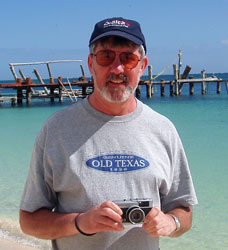
Welcome to the new Blog for users of the wonderful Olympus Trip 35. This amazing little camera is a far cry from the digital cameras of today but it a beautiful piece of engineering that can produce professional quality images with beautiful colour tones and ultimate resolution particulary with transparancy film.
The best bit is that you can pick these up for next to nothing in camera shops, car boot sales and ebay - not new of course but there must be some still around unopened in their boxes!
My advice to anyone who appreciates photography, engineering and design should pick one up and give it a try. I get emails from all over the world from people who have done just that and have been amazed by the result. My wife and I have been using one for almost 30 years and during this time we have also owned an OM1n and an OM4 with a large supply of lenses and other equipment, an Olympus Mju 35, a Bronica ETRSi medium format, a Sony Mavica and currently an Olympus Mju and a Nikon Coolpix 5400 digitals. All these cameras have their place but the one that's been used most and I would never be without on holiday is the Olympus Trip 35.

Petra, JordanThis picture was an example of not only the quality of the Trip but the speed at which it can be operated. I was part of a group of tourists and when this view appeared I knew I had to act quickly before people walked in front of me. The Trip has no batteries - the meter is powered by selinium cells - so it was just a matter of composing and shooting. Also, it's not the easiest of scenes to get a correct exposure. The Trip got it spot on, with just enough shadow detail and perfect highlight exposure. (I haven't done any manipulation on the image other than slight cropping).
I then tried to repeat the shot with my Nikon 5400. By the time it had been switched on, come to life and the shutter delay had played its part in slowing things down, the shot was lost as people had walked past me. The resulting image had excellent shadow detail but washed out highlights. Obviously this could have been corrected using its various manual controls but not easily in this situation.
It could have been luck that the Trip pruduced by far the best shot but if that is the case I have been incredibly lucky over the years!
The Trip can always be ready for a shot. I hold it in one hand with my finger on the shutter when I am anywhere that a shot might appear. The shutter is mechanical but silent and the shot can be taken with no delay, capturing the moment. I have done this countless times and it's one reason why I would not part with the camera. The other practical reason is that there are no batteries to go flat.
scrolling="no" frameborder="0"
style="border:none; width:450px; height:20px">






